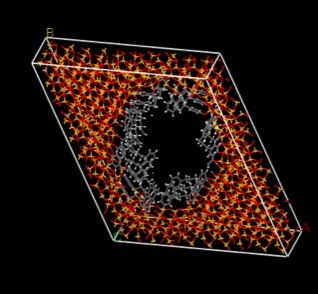A research team from the Oakridge National Laboratory of the US Department of Energy is investigating the use of neutron scattering to observe and understand the behaviour of molecules on surfaces in a better manner.
 ORNL researchers studied the molecular surface dynamics of an interior pore surface and observed that molecules tend to reside near the surface, as illustrated here.
ORNL researchers studied the molecular surface dynamics of an interior pore surface and observed that molecules tend to reside near the surface, as illustrated here.
Scientists are particularly interested in observing how molecules react to surfaces since these interactions directly affect the chemistry that is required for drug delivery, catalysis and carbon sequestration. When molecules are restricted in their movement the characteristics of the molecule are affected to a great extent. Scientists are conducting these studies to determine the relationship of these restricted movements on the chemical reaction that occurs when the molecule is attached to a solid surface.
Since neutrons are sensitive to hydrogen atoms, researchers used neutron scattering. This method also enables scientists to determine the speed of the movement of molecules and whether the movement is at an atomic or nanoscale. Scientists will be able to alter the size of the pore in order to change the chemical reactions if they gain more insight into the way in which the pore size affects chemical reactions. In order to study the interactions of the molecule with solid surfaces the team synthesised MCM41 and organic molecules and then attached the molecules to the silica surface through a chemical process, which in turn created a hybrid organic-inorganic material. The material created in such a manner is very useful in understanding the path of chemical decomposition.